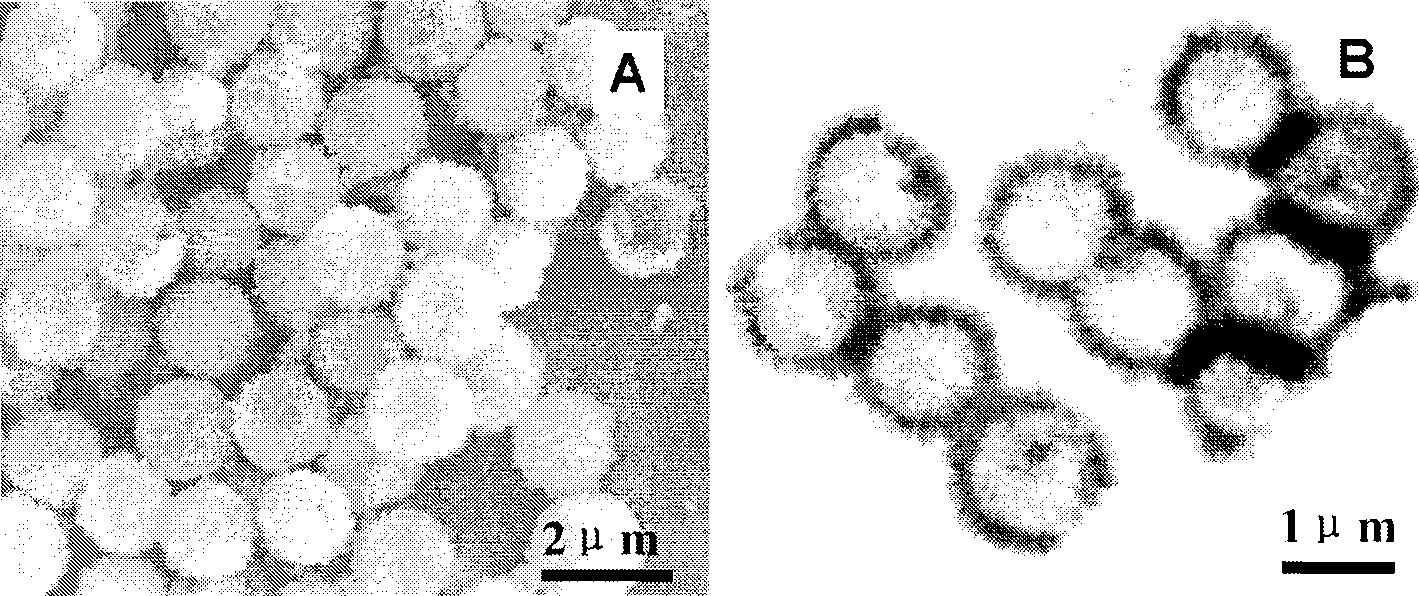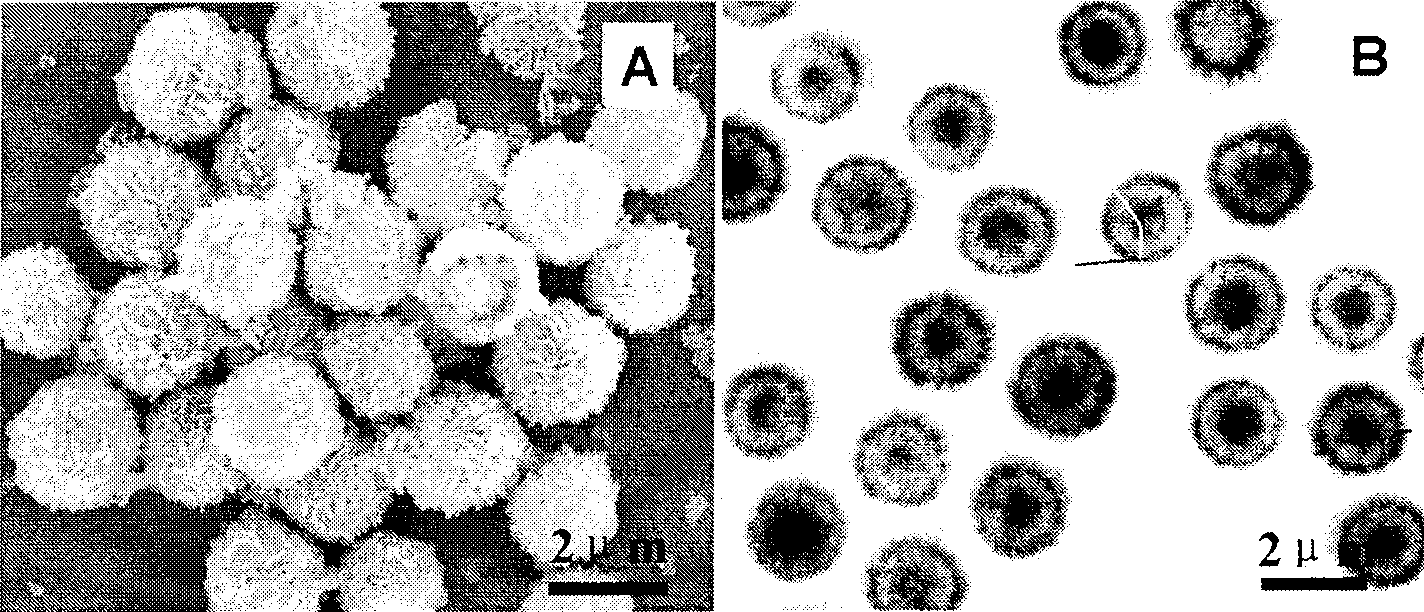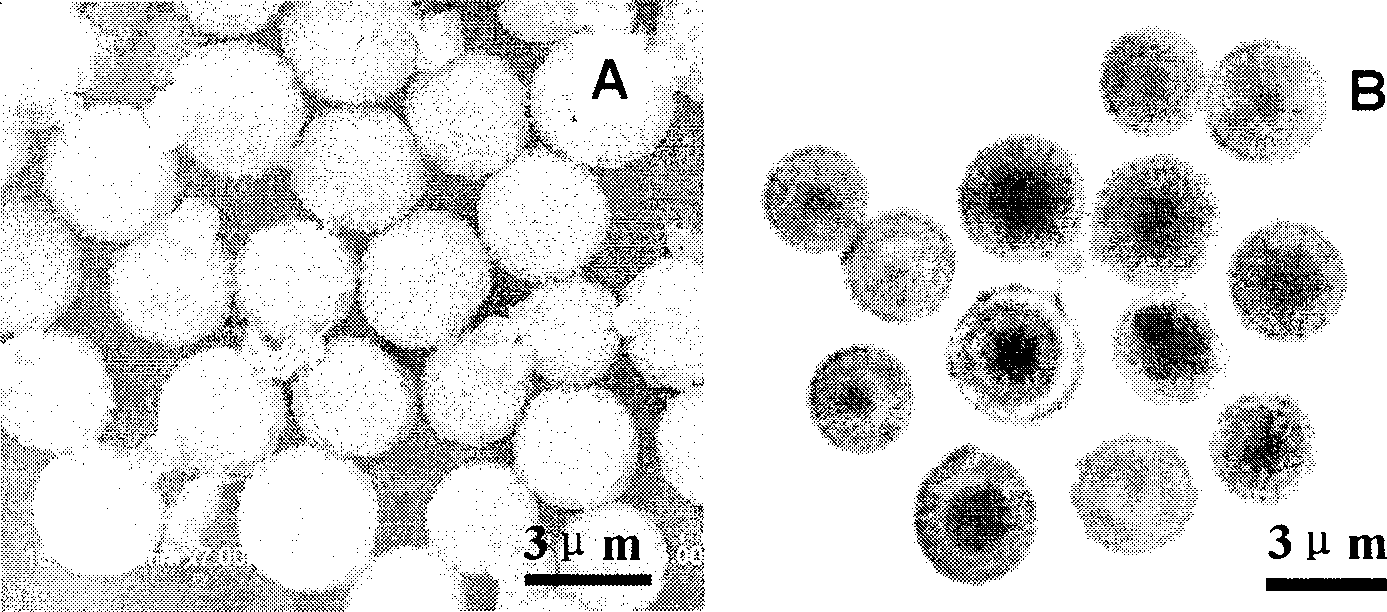Lithium cell negative pole material and preparation thereof
A negative electrode material and lithium battery technology, applied in electrode manufacturing, battery electrodes, circuits, etc., can solve the problem of low space utilization and achieve the effect of controllable layers
- Summary
- Abstract
- Description
- Claims
- Application Information
AI Technical Summary
Problems solved by technology
Method used
Image
Examples
Embodiment 1
[0021] 1) Add 60 ml of ethylene glycol, 0.02 g of PVP (molecular weight: 30,000) and 1 g of cobalt acetate into 100 ml of polytetrafluoroethylene liner, stir and dissolve, put it in a hydrothermal kettle, and react at 180°C for 12 hours, the resulting solution was washed three times with deionized water and ethanol successively to obtain the precursor powder;
[0022] 2) Calcining the precursor powder at 350° C. for 0.5 hour to obtain single-layer cobalt tetraoxide hollow microspheres, the average particle diameter of the outermost layer is 1.5 μm.
Embodiment 2
[0024] 1) Add 80 ml of ethylene glycol, 0.15 g of PVP, and 1 g of cobalt oxalate to 100 ml of PTFE lining, stir and dissolve, put it in a hydrothermal kettle, and react at 200°C for 24 hours, and dissolve the resulting solution Wash with deionized water and ethanol three times respectively to obtain the precursor powder;
[0025] 2) Calcining the precursor powder at 450° C. for 3 hours to obtain two layers of cobalt tetraoxide hollow microspheres, the average particle diameter of the outermost layer is 2 μm.
Embodiment 3
[0027] 1) Add 70 ml of ethylene glycol, 0.30 g of PVP (molecular weight: 3000), and 1 g of cobalt chloride into 100 ml of polytetrafluoroethylene lining, stir and dissolve, put it in a hydrothermal kettle, and react at 190°C for 20 hours, the resulting solution was washed three times with deionized water and ethanol successively to obtain the precursor powder;
[0028] 2) Calcining the precursor powder at 400° C. for 2 hours to obtain three layers of cobalt tetraoxide hollow microspheres, the average particle diameter of the outermost layer is 3 μm.
PUM
| Property | Measurement | Unit |
|---|---|---|
| Particle size | aaaaa | aaaaa |
Abstract
Description
Claims
Application Information
 Login to View More
Login to View More - R&D
- Intellectual Property
- Life Sciences
- Materials
- Tech Scout
- Unparalleled Data Quality
- Higher Quality Content
- 60% Fewer Hallucinations
Browse by: Latest US Patents, China's latest patents, Technical Efficacy Thesaurus, Application Domain, Technology Topic, Popular Technical Reports.
© 2025 PatSnap. All rights reserved.Legal|Privacy policy|Modern Slavery Act Transparency Statement|Sitemap|About US| Contact US: help@patsnap.com



